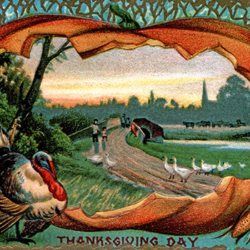One of my favorite tv shows of all time – which I’m re-watching on Netflix — is Supernatural. If you don’t already know, this scary-spice series follows the exciting journeys of Sam and Dean Winchester: two brothers who face an increasingly evil landscape as they hunt monsters. Believe it or not, over the course of one of the longest running series ever, Dean and Sam have died a total of 117 times and have been resurrected each time. Yes, died 117 times and resurrected 117 times! Now, since all my entertainment lately is Supernatural… or Bloomberg, I am starting to see parallels in the two. Or maybe they are all starting to run together, but I see a recurring theme. No, not people dying and being resurrected, but the stock market dying and being resurrected.
 Market volatility causes us to sit on the sidelines
Market volatility causes us to sit on the sidelines
The last quarter of 2018 was especially terrifying with many fearing we were retreating backwards into 2008 territory. We tend to see volatility as the enemy, causing us to move money out of the market and “sit on the sidelines” until things “calm down.” Although this approach may appear to solve one problem, it creates several others!
Back to TV. As is the case throughout all the seasons on Supernatural, a majority of the characters and subject matter is based off of something that already exists. Urban legends, scripture, references to other TV shows, comic books; most of the lore on the show can be traced back to an origin. The same goes for the history of the stock market.
How has the stock market performed during your lifetime so far?
Each year, we should all expect the market to experience a significant correction, which for the S&P 500 has averaged approximately 14% since 1980 according to First Trust. Let’s take a look at 1981, when the first set of Millennials were born. At some point during the year, the S&P was down 18% and finished down 10%. What happened the next year? It was down 17% and finally ended up 15%. Let’s take a look at the year that first set of Millennials graduated high school, somewhere around 1999. The S&P 500 was down 12% and finished up 20% in 1999. And, the year you finished your college education, in 2007 (I’m adding graduate degrees here) the S&P was down at one point 10% during that year and finished up 4%. I will go ahead and throw 2008 in here because it’s the year that the Baby Boomers decided they would keep working — and that year the S&P was down at one point 49% and finished down 38%. Up 23% is how the S&P finished in 2009 but was at a low of 28% at one point.
 The two investing decisions to get right
The two investing decisions to get right
If you don’t ignore the volatility, you must make two correct decisions back-to-back; when to get out, and when to get back in. By going to the sidelines, you could miss a potential rebound, and all the potential growth on that money moving forward. This is not historically unprecedented, as referenced above.
So, let’s go back to the basics that we all learned before this volatility made us all crazy.
Tips for dealing with a volatile market
- The Dow Jones Industrial Average (which is screamed from the rooftops by every news station all day long) is only made up of 30 companies. Ask yourself, does this accurately reflect MY investments?
- Am I following Grandpa’s wisdom of BUY LOW, SELL HIGH? Or am I doing the opposite? Am I funding my retirement plans and dollar-cost-averaging into my investments?
- Am I allocated correctly for my time horizon? The great Warren Buffett keeps this philosophy: “If you aren’t thinking about owning a stock for ten years, don’t even think about owning it for ten minutes.”
- Do you have your emergency money established? This cash serves as the cushion to the volatility of your long-term investments.
- Have you done your homework on the stock market? Do you understand investment products? Once you know and understand the market, you can stop fearing it and start using it to your advantage and avoid investing in something you don’t understand.
- My partner and mentor in this business once said: “People know the cost of everything and the value of nothing.” I think he got that quote from Phil Fisher, but that sage wisdom couldn’t be more accurate when applied to the markets. Who cares if Coca-Cola missed earnings by 4%? Ask yourself, does this news item truly impact my investment’s long-term earnings power?
- What is the goal of that ‘’talking head” on TV? Are they in the business of giving financial advice or selling advertisements? Do you have a dedicated financial advisor you can trust?
 There is no “easy button” for the stock market
There is no “easy button” for the stock market
The stock market is an unpredictable, dynamic force. Be careful who you are taking advice from (sometimes doing the opposite of that advice winds up being the right move!) and remember there is no “easy button.” I don’t usually use a lot of quotes in my blogs because I hope someday someone is quoting me – however — I will leave you with one last thought:
“Opportunities come infrequently. When it rains gold, put out the bucket, not the thimble.” -Warren Buffett
Are you using YOUR opportunities wisely? Where’s your bucket?
January 2019
Content in this material is for general information only and not intended to provide specific advice or recommendations for any individual. No strategy assures success or protects against loss. Investing involves risk including loss of principal.

 The two investing decisions to get right
The two investing decisions to get right There is no “easy button” for the stock market
There is no “easy button” for the stock market


